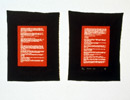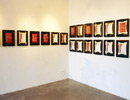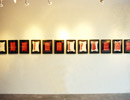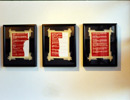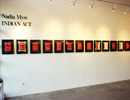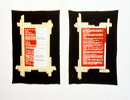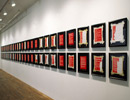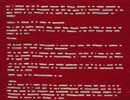BIO

As an artist, I have been sourcing the material and intellectual culture of my ancestors. My mother was orphaned and through the experience of reclaiming our Native Status in 1997 as Algonquins and members of the Kitigan Zibi reserve in Maniwaki, Quebec, the exploration of my identity has become a major theme in my work. I am interested in the specificities and practices of the Anishinabeg as well as general pan-Indian experiences of stereotype and the struggle of reclamation. As such, my work has manifested in various ways, from deconstructing language to demonstrate shifts of meaning and power within the notions of ‘desire’ and the ‘other’, to working with raw materials in the traditions of my people.
Nadia Myre is a multidisciplinary artist of Algonquin ancestry whose work explores themes of desire, identity, and language. In 1997 she was registered as a member of Kitigan Zibi (Maniwaki, Quebec) and in 2000, as a tribute to her mother’s effort in obtaining their status, Myre proceeded to bead over all 56 pages of the annotated Indian Act with the help of over 200 participants. In 2004, she started The Scar Project, an ongoing ‘open lab’ where viewers participate by sewing their scars-real or symbolic-onto stretched canvases and writing their ‘scar stories’ on paper. To date she has a collection of over 350 canvases and accompanying texts.
Recent exhibitions include Remix: New Modernities in a Post-Indian World (Heard Museum, Phoenix), Shapeshifters, Time Travellers and Storytellers, (Royal Ontario Museum, Toronto), The Want Ads and Other Scars (Urban Shaman), In My Lifetime (Canadian Museum of Civilization, Hull), Fray (Textile Museum, Toronto), Skin Deep or Poetry for the Blind (Union Gallery), and The Scar Project (Third Space Gallery). Myre’s work has been featured in art magazines such as ARTnews, Parachute, Canadian Art, and C Magazine, and is found in the public collections of the Musée National des Beaux-Arts du Québec, Canadian Museum of Civilization, Loto-Quebec, Etilejorg Museum, and the Woodland Cultural Centre.
